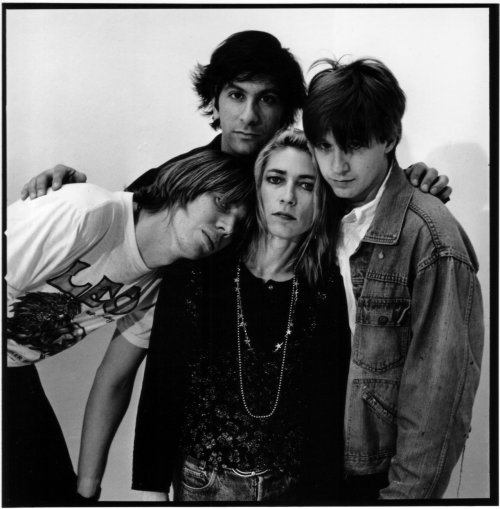The Destroyed Room: B-Sides and Rarities is a compilation by Sonic Youth containing 11 tracks from the period 1994 to 2003, the band’s transition years to a more accessible and less sharp sound. The album is also the farewell to Geffen, but it is neither a greatest hits collection nor a live album or remixes. In fact, there were bonus tracks released for the Japanese market that belonged to the compilation’s original lineup like “You Can Never Go Fast Enough, ” “Pola X”, “At Home With The Groovebox”, “All Tomorrow’s Parties 1.1” amongst other new tracks. The album, which sees Jim O'Rourke complet-ing the training stable in 7 tracks, highlights the band’s instrumental and soft electronic experimenta-tion, but is certainly not among the essential things by Sonic Youth. The gift, however, is the expanded alternate version of "The Diamond Sea” for 25 minutes, among accelerations, decelerations, feedbacks, subtractions, dissonant interludes, a chase and a series of dreamlike atmospheric moments and ecstatic melodies. The guitar textures, the reiterations of rhythm and expansions on the body of sound generate a disbelief tension towards the immaterial. The path of Thurston Moore, Kim Gordon, Steve Shelley and Lee Ranaldo has crossed that of the New York downtown scene, the reckless path of the avant-garde art and the fascination with the iconography of Pop. It is no coincidence that the cover choice was the work by Jeff Wall, a lightbox work from 1978. Stemming from the Canadian artist’s love for the great nineteenth-century Western paintings, particularly the encounter with the opera
The Death of Sardanapalus (1827) by Eugène Delacroix, the photograph combines Classic painting’s three-dimensionality and the sense of scale with the atmosphere of popular film and advertising. Built in the studio with a manic attention on details,
Jeff Wall’s large-format becomes an idea to address philoso-phical issues related to representation by transforming the photographic image into a painting of modern life. At the same time each image is a moment of lived experience, a drift of the real shifted through the accidental development of the variable of time. Like the “publicized privacy” that we find viscerally reproduced in 1998 by Tracey Emin’s “My Bed”, the intimacy and detail of his private life are shared in a dialectical relationship with the viewer.
---


